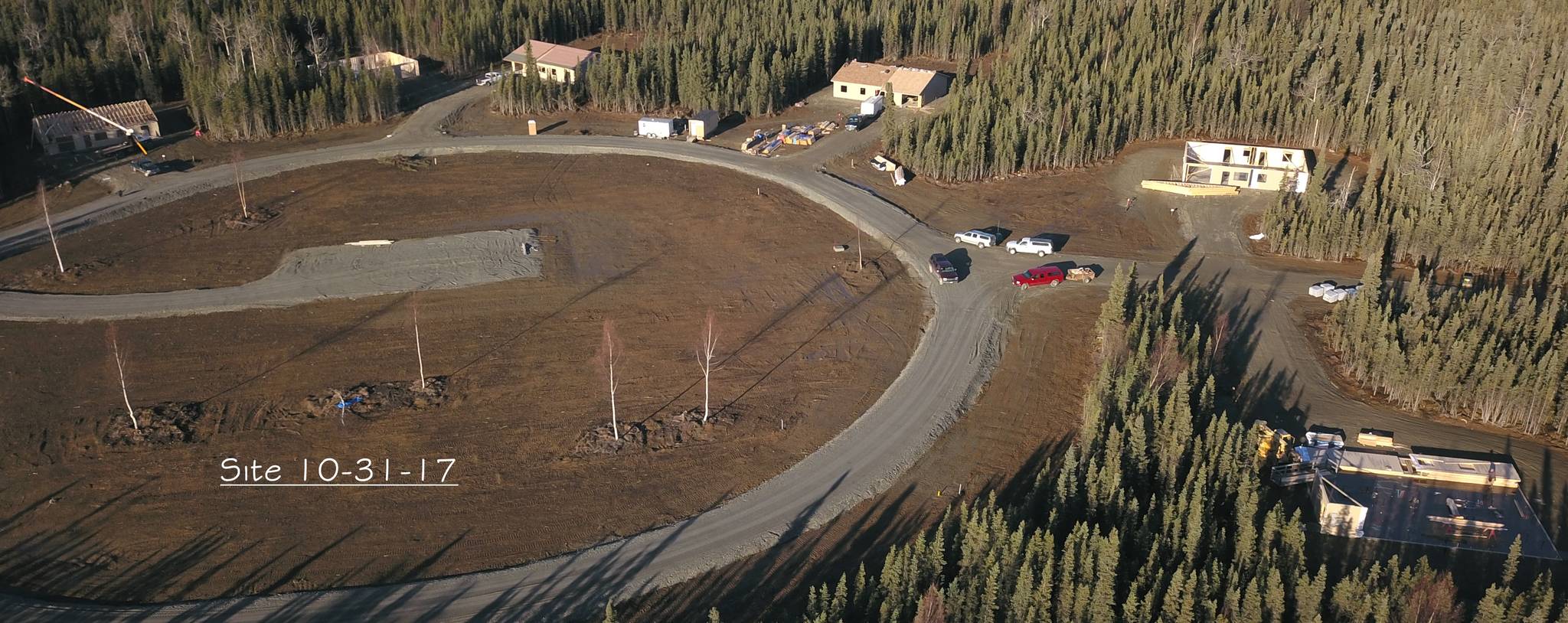At the end of a road tucked into the woods near Sterling, a group of adults with developmental disabilities will soon find a home.
A group of parents has been working with Hope Community Resources Inc. for the last five years to turn a vacant lot at the end of Black Spruce Road in the Sterling area into an intentional neighborhood for their children with development disabilities. With six homes, the residents will rent their own houses with Hope staff living nearby to help them through their daily tasks. It’s a hybrid between independent living and assisted living, hinged around developing a community between the people in the neighborhood.
Hope aims to get the first home open in January, with a home opening every two weeks after that, said executive director Roy Scheller.
“The six (residents) will form a loosely held association, and it will make most of the decisions about their lives,” he said. “Hope is ultimately responsible (for them) … and we’re trying to turn over daily decision making to the people and their families.”
Intentional communities are neighborhoods designed with the explicit intention of connecting neighbors and building a social group. Hope already runs two all-male intentional communities in the state, one in Dillingham and one in Willow. The design of the neighborhood in Sterling lends itself to neighborliness — the six houses face a central circle with an open space between them.
Kathy Fitzgerald has been working on the intentional neighborhood in Sterling for long time. She and her husband moved to the Kenai Peninsula in 2013 and care for their daughter, who has autism and requires frequent care. They began working with Hope and solicited interest from other families in the area, most of whom saw the development through to the end.
“I’ve been wanting to have an intentional neighborhood for many years,” she said. “I had worked with (the Hope staff) for many years and they had promised me that they would try to make this happen.”
One of the key parts of it will be the rural setting, allowing residents there to live a more country lifestyle with animals and hiking trails away from the more urban settings in the cities of Kenai and Soldotna.
“We’re really excited to have the opportunity because everybody can have animals if they want to and take care of them, hike … to live the Kenai lifestyle,” Fitzgerald said. “It’ll just be a really cool neighborhood. Trying to create a sense of family and belonging in the neighborhood so that people are joyful.”
Scheller said several of the residents had also had ideas about starting small businesses of their own to supplement the rent they will pay to Hope for the homes, including a small cabin rental program and a flower business. The rents are set based on the mortgages provided to Hope by the Alaska Housing Finance Corporation and on individuals’ ability to pay, supplemented by the state-provided Home and Community Based Waiver program.
Scheller said the key problem the intentional neighborhood seeks to solve is the question many parents of children with disabilities have: what happens when the children outlive their parents?
“A lot of people I’m working with as an agency are in their 70s, and they’re saying, ‘What happens now?’” he said. “In many cases, those are mothers who have stood by their child for 50 years and are now asking, ‘What happens? What will take place?’ So we’re thinking this is an opportunity to try something really new where this idea of a neighborhood of a homeowners’ association type of approach … would an association of people who are living together ultimately make you more safe over the course of your life?”
Fitzgerald has said it’s been a frequent question for her as time goes on. Getting people with disabilities established in a community with others can ensure that someone is always watching out for them, strengthen social relationships and solve the issue of what happens when the parents die and the child is still living at home but needs care.
Traditionally, group homes have been the solution, but one of the issues with them is staff turnover. People with disabilities can become very attached to caregivers at an organization, and when that caregiver leaves his or her job, it can be very traumatic for the person. Fitzgerald said she hoped that with the caregivers living on site at the intentional neighborhood and with other residents nearby, the caregivers could intermingle and lessen the stress for individual residents when one of them leaves.
“The traditional group home model, it’s not as stable because people leave,” she said. “This way, we’re building a sense of continuity. While some care staff leaves in three years, there will still be all the people that are part of her everyday life and community. That stability was one of the biggest reasons that we wanted that.”
Contractor Dan Green of G and S Construction said the workers were aiming to get the first home open in January and had all the homes framed. Some had sheet rock up as well, he said.
After a visit Thursday, Fitzgerald said her family was very excited for the neighborhood to finally open.
“We’re thrilled to death,” she said. “We’re very, very excited that we’ve finally gotten to the stage where (she can move in).”
Scheller said if the neighborhood goes well, it can serve as a model for future communities, connecting the residents with their neighbors both in the community and in the area at large. The ultimately goal with the neighborhood is to ensure continuity and safety, the same way they would have if they lived with their parents at home.
“You would always have people who are looking out for their child as you’re looking out for their child,” he said. “…It does take a village.”
Reach Elizabeth Earl at elizabeth.earl@peninsulaclarion.com.


